E-Archive
Science Update
in Vol. 12 - November Issue - Year 2011
Comparing Coverage Effects in Mechanical Surface Treatments on HCF Performance of Al2024-T4: Ball-Burnishing vs. Shot Peening

Table 1: Tensile properties of Al-2024-T4
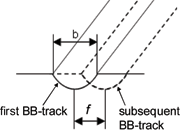
Figure 1: Definition of coverage in ball burnishing


Figure 2: Surface appearance after SP (a) and BB (b)
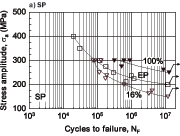
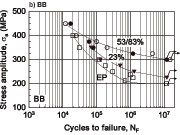
Figure 3: S-N curves (R = -1) of Al2024-T4
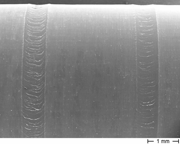
Figure 4: Manual ball-burnishing with wide distances between tracks
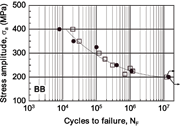
Figure 5: Effect of BB with single burnishing tracks (
Abstract: Previous work has demonstrated the marked effect that coverage degree in shot peening can have on high cycle fatigue (HCF) performance in the age-hardened aluminium alloy Al2024-T4. While full coverage resulted in the expected pronounced increase of the HCF strength relative to the electropolished reference condition, low coverage degrees were observed to drastically lower the HCF performance. The present work was undertaken to compare the reported coverage effects in shot peening with corresponding results after ball-burnishing.
Experimental
Specimen blanks 11x11x70 mm were cut from an extruded bar stock of 70 mm in diameter in longitudinal direction. Blanks were given a solution heat treatment of 2h at 495°C followed by water-quenching. Material was naturally aged at ambient temperature for at least 5 days resulting in condition T4.
Tensile specimens were machined having gage lengths and diameters of 24 mm and 6 mm respectively. The initial strain rate was 8 x 10-4s-1. Tensile properties are listed in Table 1.
Hour-glass shaped rotating beam fatigue specimens were prepared having a minimum diameter of 6 mm. Part of these specimens was ball-burnished (BB) using a conventional lathe and a hydrostatically driven tool with a hard metal ball (Ø 3 mm) from ECOROLL company in Celle, Germany. The BB pressure was kept constant at 225 bars. The coverage was varied by using various feed rates ranging from 0.085 mm/rounds to 0.310 mm/rounds. The coverage in BB was calculated by the equation C (%) = (b-f)/b, where b is the width of a single track and f is the distance between two adjacent tracks (Figure 1).
Another part of the fatigue specimens was shot-peened (SP) using spherically conditioned cut wire (SCCW14) having an average diameter of 0.35 mm. SP was done at an air pressure of 3 bars which resulted in an Almen intensity of 0.20 mmA. The coverage in SP was measured from pictures taken by optical microscopy. The coverage is calculated by the fraction of the indented area divided by the total area.
Surface roughness values were evaluated using a profilometer from Perthen Company. Micro-hardness-depth profiles on BB specimens were measured on cross sections using HV0.1. Residual stress-depth profiles were determined by the incremental hole drilling method as described in [2]. S-N curves were performed in rotating beam loading (R = -1) at a frequency of 50 Hz. A third part of the fatigue specimens was electrolytically polished (EP) to serve as a reference to which the performance of the BB and SP specimens will be compared. During electrolytical polishing, about 100 µm were removed from the surface of the specimens to exclude any machining effects that could mask the results.
Results and Discussion
Optical microscopy pictures of various coverage degrees in SP and BB are illustrated in Figure 2.
The S-N curves (R = -1) of Al2024-T4 are shown in Figure 2 illustrating the effect of coverage in both SP (Fig. 2a) and BB (Fig. 2b) conditions.
As seen in Figure 3a and already reported in [1], a low coverage degree in shot peening of about 16% drastically decreases the 107 cycles fatigue strength from about 200 MPa (reference condition EP) to 150 MPa. Early fatigue crack nucleation at single indentations was observed in low coverage shot-peened specimens. It was argued that this early fatigue crack nucleation could not be overcompensated by retardation of micro-crack growth since residual compressive stresses were hardly developed in this low coverage condition [1]. On the other hand, the full development of the residual compressive stress field after shot peening with 100% coverage led to a marked improvement of the 107 cycles fatigue strength from 200 MPa to 250 MPa (Fig. 3a). This beneficial effect can clearly be derived from the crack growth retarding effect of the residual compressive stresses since the resistance to fatigue crack nucleation was not improved compared to low coverage shot peening. Thus, it is confirmed that HCF performance in shot peened Al2024-T4 is mainly governed by micro-crack growth rather than by the resistance to fatigue crack nucleation.
In contrast to the effect of coverage in shot peening, no loss in 107 cycles fatigue strength relative to the reference EP was found after ball-burnishing using a low (23%) coverage degree (Fig. 3b). This can be explained by the surface roughness in low coverage ball-burnishing being much lower than in low coverage shot peening. Increasing the coverage degree in ball-burnishing from 23% to 53% or 83% markedly increased the 107 cycles fatigue strength from 225 MPa to 300 MPa (Fig. 3b). This result can be explained by the smoothing of the surface topography with increasing coverage degrees in ball-burnishing. Furthermore, the more marked residual compressive stress field might play an additional role.
In order to clarify if single burnishing tracks can lead to early fatigue crack nucleation similar to single indentations in low coverage shot peening, burnishing was performed manually with tracks having great distances to each other (Fig. 4).
The resulting S-N curves are illustrated in Figure 5.
As seen in Figure 5, no loss in HCF performance was observed relative to the reference EP. Obviously, the stress concentration caused by single tracks is much lower than in the case of low coverage shot peening and may be compensated by the local hardening effect due to cold work. Presumably, the lower stress concentration at burnishing tracks is the result of the used hard metal ball size having a diameter of 3 mm as opposed to the shot diameter of 0.35 mm used in shot peening.
Conclusions
As opposed to low coverage SP, no detrimental effect of low coverage BB could be observed. This is explained by the stress concentration at burnishing tracks being much less marked than the stress concentration at shot indentations in shot peening. While beneficial SP effects clearly rely on residual compressive stresses retarding fatigue micro-crack growth, in BB, residual compressive stresses are of less importance.
References
[1] T. Ludian and L. Wagner:
Importance of Coverage in Shot Peening of Fatigue of Al2024-T4
MFN, Vol. 6, July Issue (2005) 44.
[2] M. Mhaede and L. Wagner:
Effect of Coverage in Ball-Burnishing on Fatigue Performance of Al2024-T4
Shot Peening, Proc. of ICSP 11 (J. Champaign, ed.) 291.
Prof. Lothar Wagner, Director of the Institute of Materials Science and Engineering (IWW) of TU Clausthal.
He will be the Chairman of the next shot peening conference (ICSP 12) to be held in September 2014 at Goslar, Germany.
E-mail: lothar.wagner@tu-clausthal.de
Dr. Mansour Mhaede, Research Associate at IWW.
He is mainly involved in both shot peening and ball-burnishing activities at IWW.
E-mail: mansour.mhaede@tu-clausthal.de



























